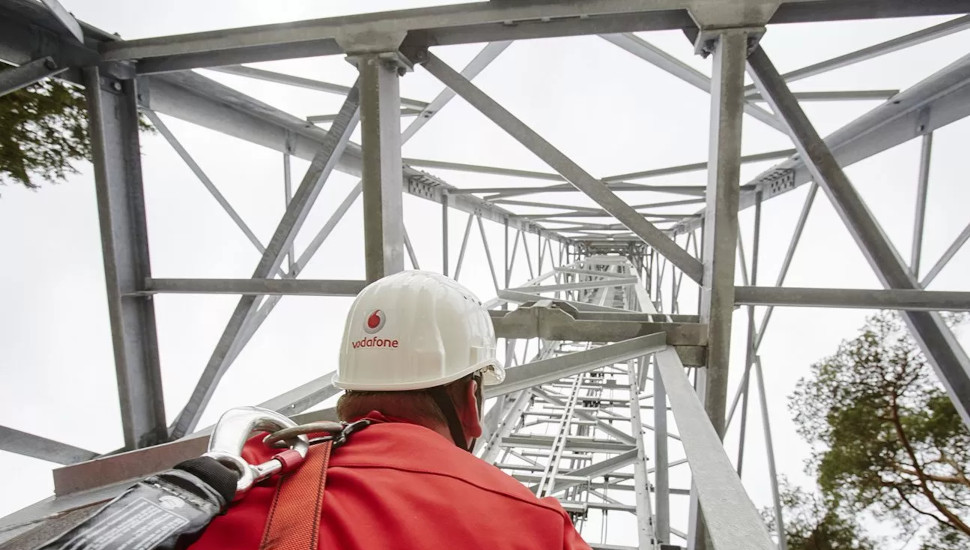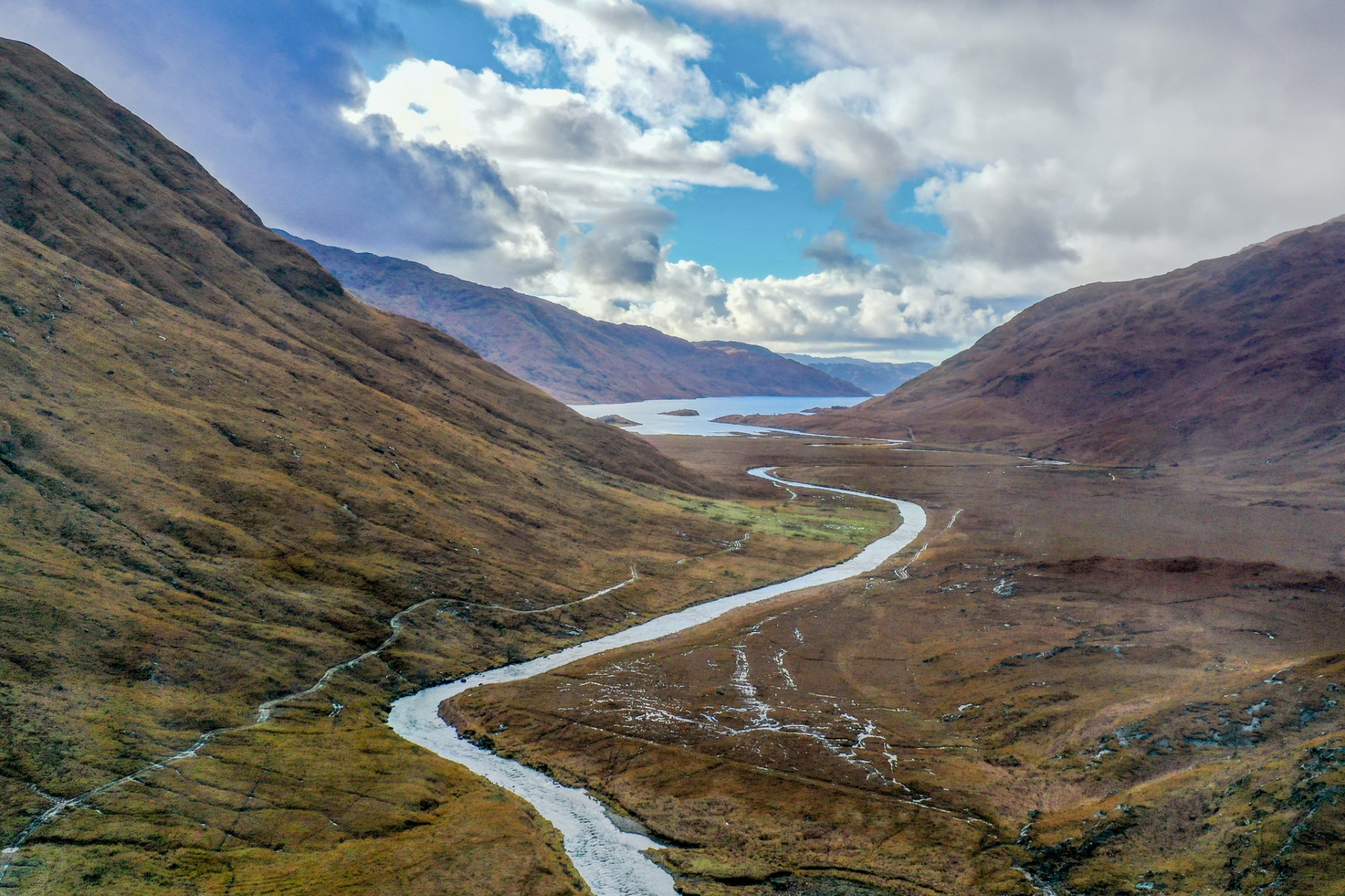
At Vodafone, connecting everyone and anyone, irrelevant of where they live, has been at the core of our business for decades. That is as true today as it was when we started the business in the 80s, and the reason we continue to invest millions in our rural network.
Today, we deliver 4G coverage to 99% of the UK population. This is a complex task in itself, but it still means some customers in remote areas may still be missing out on the benefits of a strong and reliable connection.
This is why we were early shapers of the Shared Rural Network (SRN) programme – a £1 billion joint-funded initiative between government and the UK mobile network operators, it uses mast sharing on existing rural sites, alongside the building of new shared masts to connect areas that currently have no coverage at all.
The SRN programme started with our customers in the Wye Valley, and now, more than 200 additional sites from the Scottish Highlands to Cornwall have strong and reliable Vodafone 4G as part of our ongoing commitment.
Turning obstacles into opportunities
We’re proud of this progress. But, as with all complex projects, there have been some challenges. We’ve been open and transparent about these with government at national, devolved and local levels. And, even though most of these challenges are outside of our control, we’ve been working hard to overcome them.
Let’s not forget, the COVID-19 pandemic was as much of a disruption to the telecommunications industry as any other. We’ve been working hard to try and recover these accumulated delays by shortening and expediting our build process.
We’re also working incredibly closely with the local councils to ensure agreements are reached as quickly as possible, offering extra support to them. Planning applications are taking longer to process than prior to the pandemic, which is an unforeseen challenge.
Finally, there is also some legal delay due to uncertainty around the law that governs the relationship with the landlords on whose land we build our masts. The law has yet to be implemented but, in the meantime, we’ve doubled down on our negotiations for lease agreements.
Connecting communities
The SRN programme itself is one of the most complex and nuanced tasks the telecoms industry has undertaken in its history. Despite this, and the numerous hurdles to overcome, we remain completely committed and on track to hit our regulatory obligation in 2027.
SRN is only a part of our rural connectivity story, however. We’ve also spent a considerable amount of time and investment introducing innovative technology to our rural network. And I like to think we have always been ahead of the competition in this space.
For example, back in 2014, we set an industry benchmark with the launch of our Rural Open Sure Signal (ROSS) programme, which resulted in more than 100 rural communities from across the UK approaching us for first-time mobile coverage using small cell technology.
Fast forward 10 years and the majority of those ROSS communities have now been upgraded to 4G coverage. Meanwhile, with the latest generation of 4G small cells, we continue to reach parts of the UK that other networks cannot reach.
We’re currently rolling these out on existing structures such as rural church towers and telegraph poles in those original ROSS communities, and across other rural villages throughout the UK. This latest small cell deployment uses OpenRAN, a new technology which is changing the telecoms landscape by enabling different vendors to be used for different elements of the core network delivery.
Vodafone was one of the most prominent forces in the OpenRAN community in the early days, and we still lead this innovative segment today. It has now become a core part of our network strategy, including in the rural communities. We can only do this because we’ve spent a significant amount of our time, over a number of years, investing heavily in expanding 4G and 5G, with a significant focus on our rural network.

A history of innovation
5G has the potential to change the rural connectivity landscape further and we were early adopters when introducing it into rural locations. One of the first places across the UK to receive Vodafone 5G, back in 2019, was the Isles of Scilly. Today, we remain the only 5G network on the islands, supporting customers and local businesses, including the all-important tourism industry that the island economy relies on.
We were one of the first to start testing 5G innovation for rural businesses too, including our work with Dorset Council on the government-funded 5G Rural Dorset project. This saw our 5G used for everything from sensors gathering agricultural data, such as soil health and water quality, to Internet of Things (IoT) monitoring of local cliff erosion.
In fact, our IoT network provides the backbone that a large number of rural UK business applications rely on every day, whether that involves monitoring the health of trees or notifying farmers of when their cows go into labour.
Bigger, better things
In 2023, we announced our proposed merger with Three UK. At the core of this proposal is the ability to deliver advanced 5G to every corner of the UK. The status quo creates a rural digital divide, but we want to do everything in our power to prevent this.
In November 2023 we issued a study that revealed the widening gap between urban and rural areas. The headline was that almost a million (838,000) people were living in deprived rural areas and were subsequently losing out on the benefits of 5G, such as better access to healthcare and educational support tools. It also impacts people’s ability to work and start their own business ventures.
Because of this, we highlighted the need to accelerate the roll-out of the UK’s 5G infrastructure in rural locations. As part of our proposed merger with Three UK, we can help make this a reality and, in turn, close the rural digital divide by delivering 95% 5G Standalone geographic coverage by 2034. This scale of investment would allow us to enhance 5G up and down the country and, ultimately, supercharge rural communities.
From day one, our customers will also benefit from access to better 4G coverage too, by improving geographic reach from 88% to 91%. The combined business would ultimately deliver more than 95% 4G geographic coverage by 2027 – exceeding the government’s SRN target of 90% from each mobile operator in the same timeframe – while removing 25% of uncovered areas for both Vodafone and Three customers.







